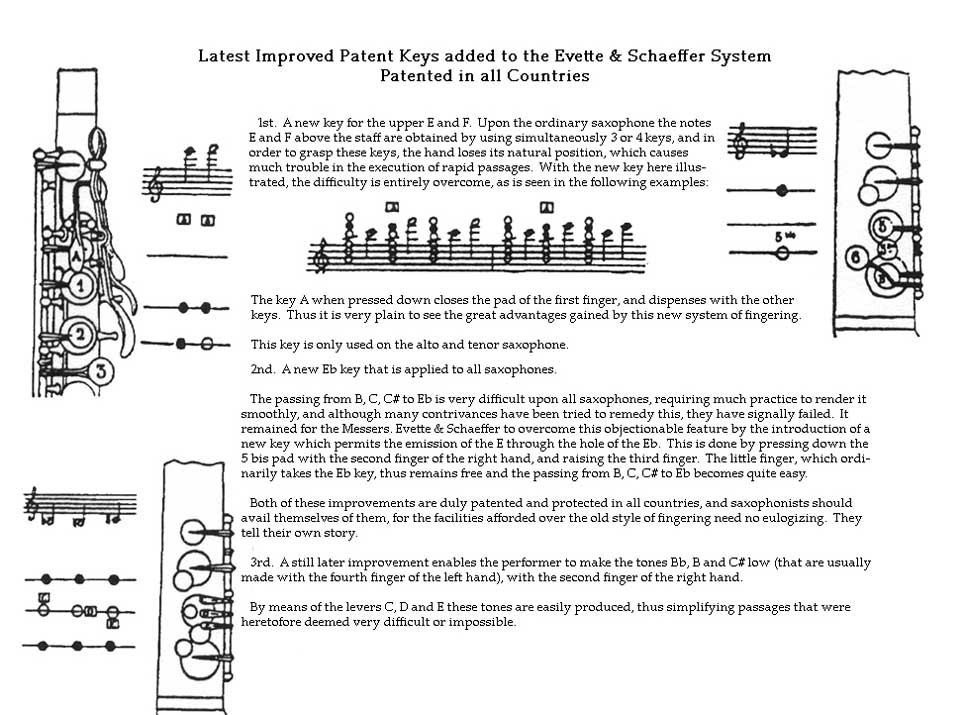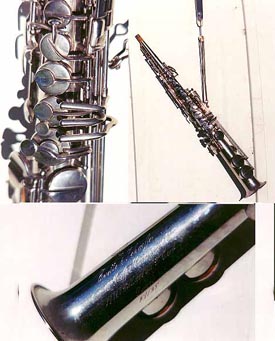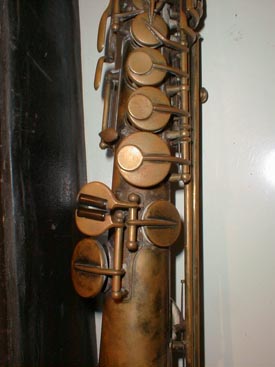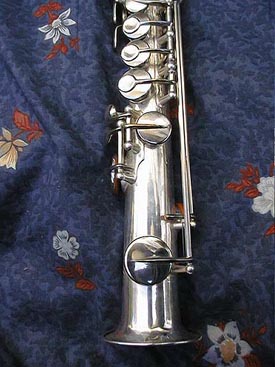| "Evette-Schaeffer
System" Models
There are three "subsets" of horns produced during this period: * Low B models. These models, functionally and visually identical to earlier horns, were available (probably) as the low-cost or "introductory" line. Couesnon, Sax and other French-manufacturers also sold their low B horns as low-cost models, so I'd say this was standard practice (pun intended. SML revised this practice of selling the older model along with the newer one in the 1940's with their Standard model). HOWEVER, these horns may have been A=435hz horns (French standard pitch) and discontinued "around" 1914 when the A=440hz (low pitch) international standard was introduced. * Non-patented models. These are essentially an evolution of the earlier series of horns and have improved keywork and extended keyed range (see below). They just don't have any of the alternate keywork that the patented models have. * Patented models. Paul Evette and Ernest Schaeffer bought the Buffet-Crampon firm in 1885 and patented their first saxophone on July 25, 1887 (December 5, 1899 in the US). These horns are significantly different than earlier models and are possibly the most technically advanced of any French-made horn produced at the time, with the possible exception of Couesnon. All horns had the following features:
All models except the Low B horns introduced the following:
The patented horns introduced some interesting keywork changes:
Below is a copy of an 1899 advertisement for these horns. I've made the text a little more legible (you can see the original HERE). It gives you a very good idea of what the additional keywork is for. (See also the Vintage Saxophones Revisited article by Prof. Paul Cohen in the March/April 1994 Saxophone Journal magazine.) |
 |
| Donate to the Vintage Saxophone Gallery Website | ||
|
|
||
Website copyright © 1997-2006 by Pete Hales.
Pictures/sounds/etc. used herein may have their own copyright and most are used by permission.
If you feel any image or soundbyte used here is in violation of copyright or for information regarding use/reproduction of this website's content, please e-mail saxpics@gmail.com
Comments, corrections, suggestions or picture submissions: saxpics@gmail.com





